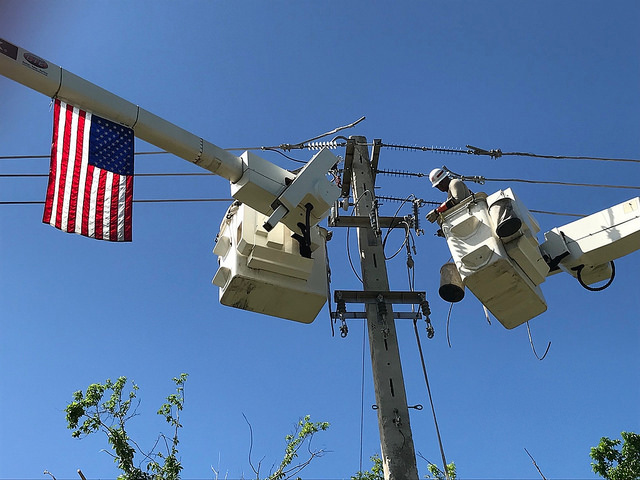
Since Puerto Rico was struck by Hurricane Maria in late September, the island has struggled to repair power lines, water pumps, cell phone towers, roads, and bridges. The electrical system has come under the most scrutiny. The commonwealth’s power provider—Puerto Rico Electric Power Authority or PREPA—was bankrupt going into the disaster and has faced scandal after scandal in recent weeks. After reconnecting more than 40 percent of its generating sources early last week, a major power line failed on Thursday, reducing the grid's online capacity to 18 percent. Although the line was quickly fixed, PREPA's grid is only working at 47 percent capacity now, according to statistics from the Puerto Rican government.
With more than 50 percent of the grid offline, previously connected Puerto Ricans have been living off generators or solar panels for nearly 7 weeks, or they live without power.
On Thursday, Governor Ricardo Rosselló demanded that his entire cabinet submit undated letters of resignation to his office, according to The New York Times. Rosselló said he hoped to cut cabinet members to form a more nimble government.
The major power outage on Thursday was another blow to the grid restoration efforts in Puerto Rico. The damaged line ran from Manatí, 32 miles (51 km) west of San Juan, to Cambalache, which is another 17 miles (28km) west of Manatí. The failure took out service in San Juan, Toa Baja, Bayamón, and Guaynabo, according to El Nuevo Día.
The month prior, that same power line had been repaired by the Montana firm Whitefish Energy. A PREPA official said that cause for the power line failure was a “mechanical issue on the line.” Whitefish told The Hill that none of the outages “have anything to do with the repairs Whitefish Energy performed.”
Whitefish found itself in the limelight last month when it was discovered that PREPA hadn’t reached out to other US state or municipal governments for mutual aid in grid repair (which is the norm). Instead, PREPA awarded Whitefish a $300 million contract to make the necessary repairs. The contract was bigger than anything the company had been hired for previously, and only two full-time employees staffed the firm. (Whitefish hires contractors to complete its grid repair services.)
Suspicion deepened when it was learned that the owners of Whitefish Energy knew Interior Secretary Ryan Zinke, although Zinke denied having helped the firm get the contract. Later, an inspection of the contract signed between PREPA and Whitefish revealed terms prohibiting a government audit into Whitefish’s labor costs or profit. PREPA had even signed the contract attesting that the Federal Emergency Management Agency (FEMA) had reviewed and approved of the contract, but FEMA denied ever doing so.
Amid the controversy, US Congress members in the House and the Senate began requesting investigations, and on October 30, the day after Gov. Rosselló demanded that PREPA end its contract with Whitefish, the FBI opened its own investigation into the firm.
Whitefish is scheduled to leave Puerto Rico at the end of November. At the end of October, PREPA had paid $8 million of the promised $300 million to Whitefish. FEMA has refused to pay for Whitefish services.
Whether the outage last week was the result of faulty repairs or not, the fact remains that the lives of regular people have been disrupted by grid failure for too long.
Source
Comments
Post a Comment